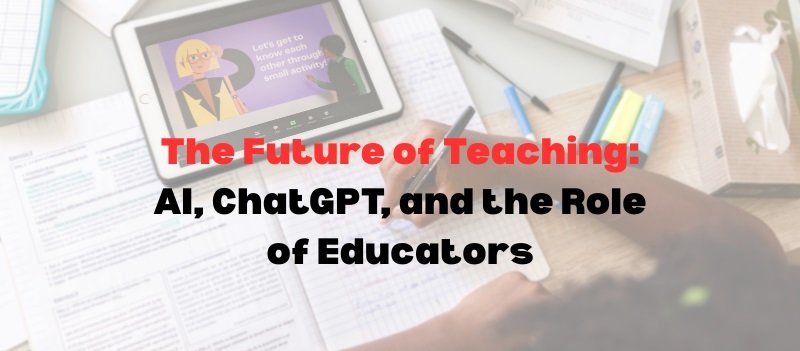
Walk into any modern classroom today, and you’ll likely see a projector, smartboard, or even students with tablets. But that’s just the beginning. With the rise of Artificial Intelligence (AI), the world of education is entering a revolutionary phase.
From lesson planning to student support, tools like ChatGPT are redefining what’s possible in the classroom. But does that mean teachers will be replaced? Absolutely not. In fact, this technological transformation highlights a deeper truth: the role of educators is evolving, not disappearing.
For B.Ed. students, teacher trainees, and young educators, now is the perfect time to understand how AI in education is shaping the future and how to thrive in this new era.
AI is no longer a futuristic concept; it’s already part of classrooms across the globe. Here’s how:
1. Lesson Planning Made Easy
Teachers can use AI tools like ChatGPT for teachers to:
Generate engaging lesson plans tailored to different age groups
Find relevant activities or experiments quickly
Get sample questions for quizzes and exams
For example, instead of spending hours designing a lesson on photosynthesis, teachers can input a simple prompt and get a well-structured outline in seconds.
2. Personalized Learning
AI helps identify a student’s learning level and recommends content accordingly. Platforms using AI can:
Track progress
Suggest remedial or advanced content
Adapt to different learning styles
This personalized learning ensures that no student is left behind, especially in diverse classrooms.
3. Assessment and Feedback
Correcting hundreds of answer sheets? AI tools can help:
Automate grading of objective questions
Give instant feedback on written assignments
Spot patterns in student performance
This allows teachers to focus more on student interaction than paperwork.
4. Language Support and Accessibility
Students who struggle with English or other languages benefit from AI-powered translation and voice-to-text tools. It supports inclusive education by helping students with learning disabilities or language barriers.
Despite all its benefits, AI has its limitations. A machine can give answers, but it can’t inspire, guide, or truly connect with students the way a teacher can.
Here’s what AI cannot do:
Empathy and Emotional Intelligence
Teachers play a vital role in understanding students’ emotional needs. They can sense when a child is stressed, disengaged, or struggling—something no AI can fully grasp.
Creativity in Teaching
AI may help generate content, but it’s the teacher’s creativity that makes lessons come alive. Activities, stories, jokes, and interactive games all come from a teacher’s personal touch.
Moral and Ethical Guidance
Teachers are role models. They shape character, values, and life skills. Machines can’t teach compassion, teamwork, or resilience.
So, while AI might assist in tasks, the soul of education still lies with the teacher.
To make the most of AI in education, teachers don’t need to become coders, but they do need to upskill in the right areas.
Here are the must-have future-ready skills:
These skills ensure teachers are not competing with AI but rather collaborating with it to improve learning outcomes.
Teacher education institutions must evolve too. Here’s how B.Ed. colleges and training institutes can prepare future educators:
1. Introduce AI in Curriculum
Courses should include modules on:
2. Microteaching with AI
Imagine trainees using ChatGPT to create mock lessons, then delivering them while peers give feedback. This modernizes the traditional microteaching method.
3. Workshops on EdTech Tools
Hands-on sessions on tools like
4. Digital Portfolios
Encourage teacher trainees to build online teaching portfolios, showcasing their digital skills and lesson plans using AI tools.
As AI continues to grow, so does the need for thoughtful, skilled, and emotionally intelligent teachers.
AI may be fast, but only a human educator can shape young minds with care, creativity, and wisdom.
So, to every B.Ed. student or young teacher reading this, don’t fear AI. Embrace it. Learn it. Lead with it.